Indeed, Vic, you wrote this here.
However, isn’t ethanol an alcohol?
I did look at this before but, now, looking at the PR1422 data sheet it does say excellent resistance to alcohols. So you are right on the fuel tank sealant.
I wonder if @Maoraigh is still about?
I’m sort of running on the principle that these are fairly basic engines and not likely to be that fussy about what they drink.
Peter wrote:
You can do ethanol tests before you use the stuff, but if it comes up as containing it, do you drive down to the petrol station down the road??
I am yet to see a positive test for ethanol, so I don’t know! Apparently the fuel company certifies it as ethanol-free, so in theory one could return it for a refund. Whether one could be bothered with this is another matter.
Would I put it in the aeroplane anyway? If I owned it outright, then probably. As those with Africa experience tell us, you just get on with it. One dose of ethanol isn’t going to hurt, and if the next can from the same filling station tested positive too then one would look for a different supplier or ask the company about their spec.
But it’s a group-owned aircraft and I have a responsibility to the other guys to do the right thing – so no, in this instance I would not put it in the aeroplane.
I don’t see how anybody can know what stuff is in the petrol from a petrol station…
You can do ethanol tests before you use the stuff, but if it comes up as containing it, do you drive down to the petrol station down the road??
We have done this before but ethanol is likely to eat PR1422 and its variants which are commonly used as fuel tank sealants. It will take time but if you look up the sealant spec the vulnerability is obvious.
AeroPlus wrote:
As mentioned before, I do see a significant difference in oil consumption, which is very low when flying on AVGAS and much higher when flying on normal gasoline. I am not sure why. Is there anyone here on the forum that would know the reason for the significant increase?
Could it be the lead in avgas? Perhaps the lead goes some way to gumming up the clearance between valves and their guides, preventing oil getting into the combustion chamber that way?
Peter wrote:
So, is “mogas” really car petrol, from a petrol station?I know many people use the term in exactly that way.
But I thought that there is, or used to be, an aviation product called “mogas” which is car petrol but without the ethanol or other rubbish, and with some better quality control.
I have seen 100LL pumps, 91UL pumps (very rare) but have never seen a “mogas” pump. OK; I don’t do the “farm strip” scene, but filling up 10-20 20-litre jerrycans at a petrol station is a pretty hard job.
I was similarly confused as to what it actually is, and probably still am.
As it was explained to me by a fellow Vagabond pilot, the premium fuel from the filling station is certified ethanol-free – or at least some brands are, not all. We cannot use the ordinary fuel because it will contain ethanol. Luckily my closest filling station is the correct brand. Even with the premium, we test each time we fill.
It is not an everyday solution for aeroplanes with tanks running into hundreds of litres, because ordinary jerry cans hold 20 litres and it would be a huge amount of messing around as you say.
However, for a Vagabond with a 45 litre tank it is workable. I just have one jerry can and try to keep it full – if it is empty it gets slung in the back of my car and filled when I next happen to pass the filling station. When full it goes in my garage at home (someone will tell me this is illegal, but neither I nor any enforcement authority care) and then whenever I drive to the airfield I put it in the back of my car in case I need it.
For nearly all flights I refuel afterwards with avgas because it is less faffing around to just use the pump and the saving on such a small quantity is not much. But if I return late when the pump has been turned off (as I often do, I like flying in the evenings) it is very useful to have it, because it means I don’t have to come back another day to refuel the aeroplane (the group policy is refuel when finished).
Ethanol content is the only difference between Mogas and gasoline. Ethanol and rubber parts (engine pump?) do not go well together. However, if you fly to places in Africa where there is a normal gas station but nothing else you can test for ethanol, but if you find it or not in the fuel, you have a choice to fly away from the place with the fuel they have or you can stay there and leave the aircraft on the apron. Talking to ferry and bush pilots there, many of them fill up regularly with normal gasoline to fall back to AVGAS again once available. So, I never found any significant (or mostly not at all) ethanol in the fuel in Africa.
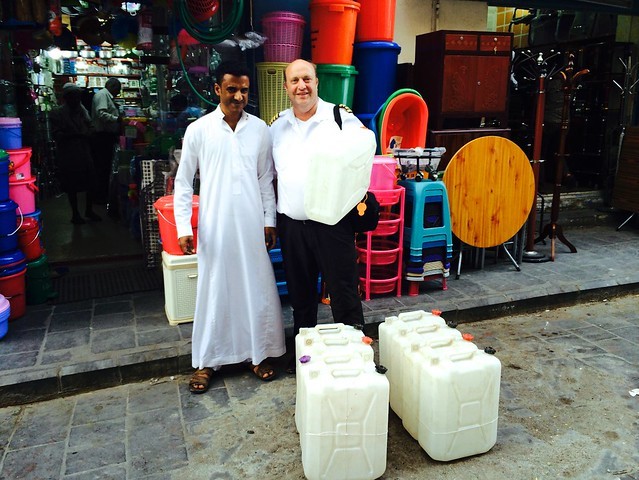
Buying jerrycans at the market in Aden, Yemen
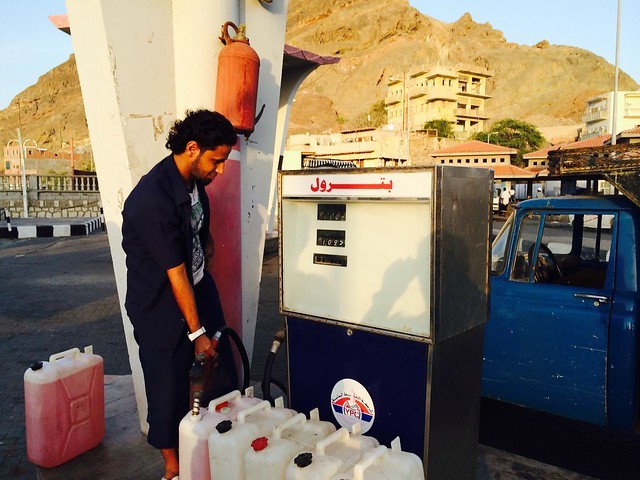
At the local fuel station. No idea what the sign says, but it smelled like gasoline and not like diesel.
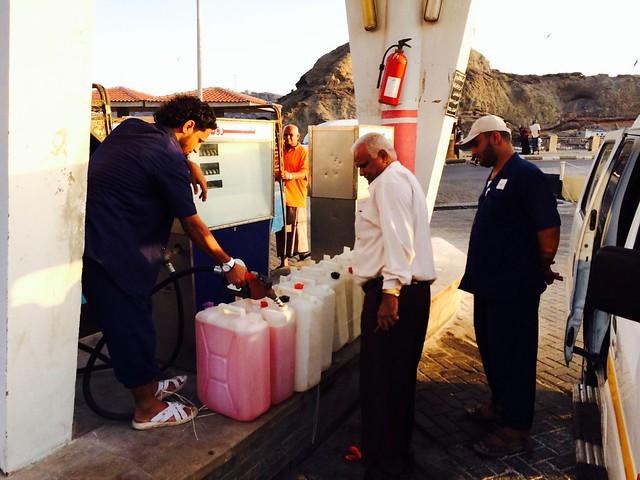
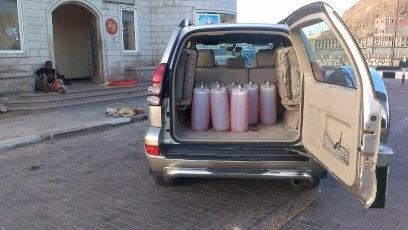
Transport of our fuel back to the Aden airport.
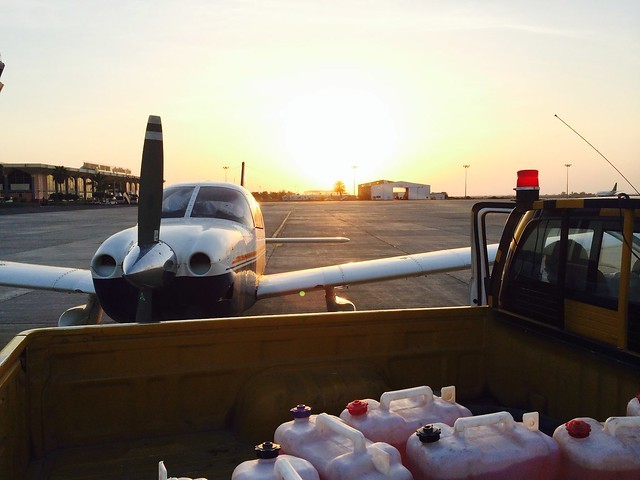
Back at the aircraft with the fuel.
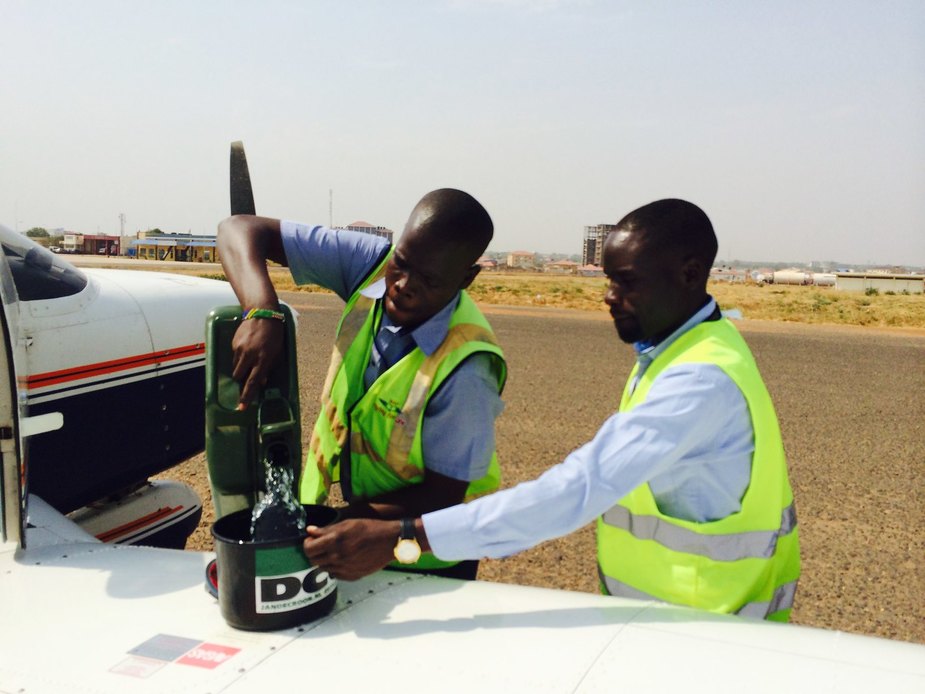
Using a fuel filter to filter out sand/dirt and water. The picture was taken at Juba Airport, South Sudan.
If there is ethanol, it might damage rubber parts over time. That is not nice and you never know how long it takes for it to become a problem, but I would always ask the maintenance shop after a ferry flight to have an extra look, but they never found any issues.
As mentioned before, I do see a significant difference in oil consumption, which is very low when flying on AVGAS and much higher when flying on normal gasoline. I am not sure why. Is there anyone here on the forum that would know the reason for the significant increase?
I was very satisfied using for 5 years Unleaded 100 from a known petrol station for my C172P. Allways passed the water and alcohol testing.CHTs were lower even in climb.Oil consumption was Nil.Removed my stress to try to land for Avgas refueling when I didnt want to.It also extended the destinations and distances I wished to go.I used WW2 cannisters,a micro funnel,a 12V fuel pump,GOOD GROUNDING and kept fire extinguishers around.The price was half too !
BTW,the possibility of high alcohol is almost nil in southern hot countries.Alcohol is more pronounced in cooler countries for the winter batches.Water is more suspected instead for reasons of neglect or mafia frauds.Happened to me twice in Bulgaria and south Italy.
So, is “mogas” really car petrol, from a petrol station?
I know many people use the term in exactly that way.
But I thought that there is, or used to be, an aviation product called “mogas” which is car petrol but without the ethanol or other rubbish, and with some better quality control.
I have seen 100LL pumps, 91UL pumps (very rare) but have never seen a “mogas” pump. OK; I don’t do the “farm strip” scene, but filling up 10-20 20-litre jerrycans at a petrol station is a pretty hard job.
We can use mogas in the C90 in the Vagabond.
It apparently needs to be ethanol free, and we test any we use with a little kit branded as Bluebottle. You pipette a bit into a test vial which has some purple solid in it, and as long as it doesn’t dissolve then you’re good to go.
The premium fuel from our nearest garage has always passed the test for me, and I’ve never noticed any difference in the way the engine runs – although I’ve not used it extensively.
Advantages in this situation:
40p a litre cheaper.
Allows me to return and still refuel late in the evening, after the avgas pump has been switched off.
Small tank (45 litres) means the average bimble can be refuelled from one jerry can, and any flight from two.